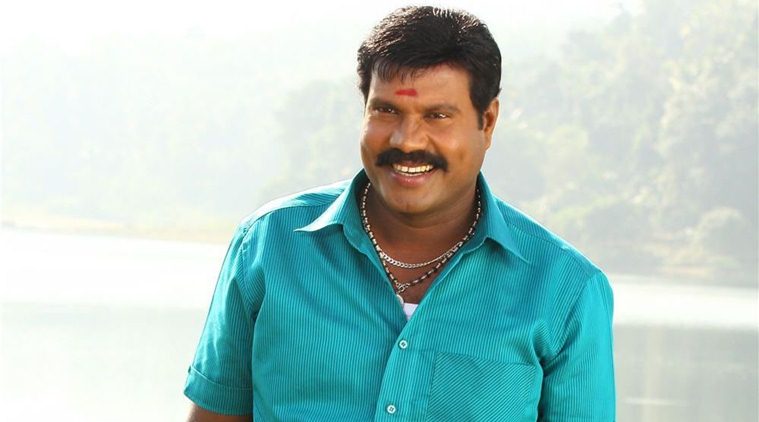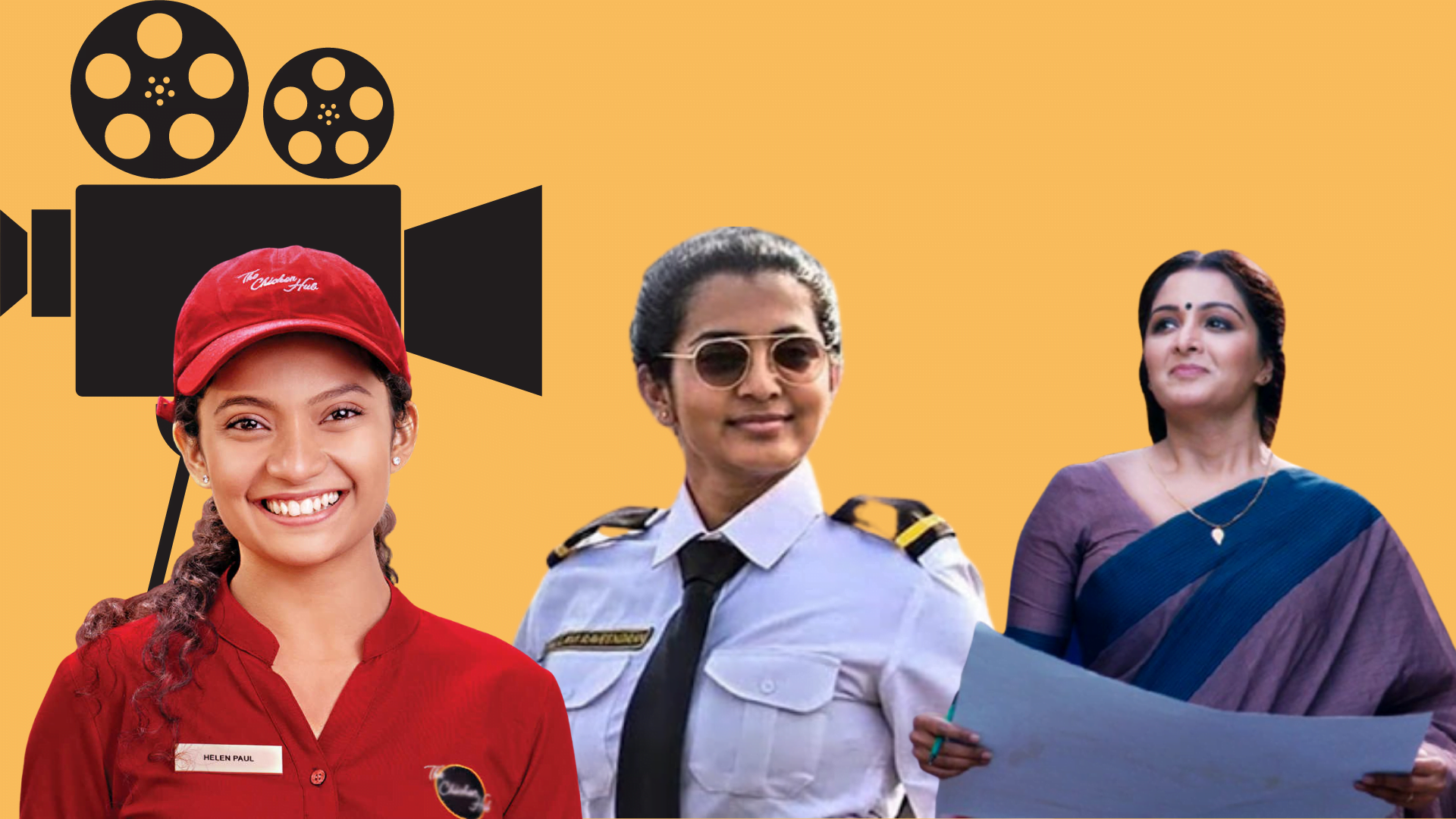Posted by Malavika Binny
Recently Kani Kusurti who won the award for the Kerala State Best Actress dedicated her award to Malayalam film industry’s first heroine – P K Rosy, the Dalit Malayalam actor “who was driven away from the industry for playing the role of an upper caste woman.” In the interview given to The Hindu, she also spoke about the long-standing narrative of caste and colour in the Malayalam film industry.
It was indeed heartening that after 50 years of the institution of the State awards, an actor has dared to speak about caste in Malayali cinema using the platform of Kerala State Awards. While Malayalam cinema has been lauded for artistic sensibilities and its new wave progressive film making in the recent past, what often goes unspoken in the Malayalam film industry is a dismissal of caste as a theme in film making and also conversations about its deep entrenchment in the industry. Following up on Kani’s reactions, there has also been a petition to rename the Best Actress Award as the P K Rosy Award.

Also read: RLV Ramakrishnan’s Case: The Invisible Serpents On The Prowl

The life story of PK Rosy is a telling predicament of Malayalam cinema’s complicated relationship with caste. Born in a Pulaya family, P K Rosy was a skilled artiste in Kakarissi natkam, a folk theatre which made J C Daniel chose her as the heroine for the first ever movie made in Malayalam. She played the role of an upper caste Nair woman Sarojini in the movie which incensed many upper caste men who allegedly burnt down her house and drove her out of Kerala, for daring to be a Dalit Malayalam actor. After P K Rosy, the industry is yet to see a Dalit Malayalam film heroine.
Caste is still an issue which most mainstream Malayalam film-makers shy away from, though there are brilliant exceptions such as that of Neelakuyil (1956), Kammatipaddom (2016) and Kismath (2016) which took the issue head on. Even in these movies which had a Dalit woman as the chief protagonist, the characters were not essayed by Dalit Malayalam actresses but by upper caste women, with dark complexioned heroines being almost absent from the Malayalam silver screen.

What complicates the issue even further is the near absence of conversations regarding caste and colour by film actors who constantly deny caste privileges that they enjoy both as characters on the silver screen and as real-life celebrities. In fact, one is at great odds to find a dark skinned, Dalit Malayalam heroine from the film industry.
While Dalit Malayalam actors such as Vinayakan and Manikandan are being represented and amassing a fan following for their talent in the recent past, the search for a Dalit Malayalam heroine seems elusive. Dark skinned heroines are by themselves a rarity in the Malayalam film industry which as rule of thumb even precludes the possibility of the heroine sporting a colour shade darker than wheatish.
While Dalit Malayalam actors such as Vinayakan and Manikandan are being represented and amassing a fan following for their talent in the recent past, the search for a Dalit Malayalam heroine seems elusive. Dark skinned heroines are by themselves a rarity in the Malayalam film industry which as rule of thumb even precludes the possibility of the heroine sporting a colour shade darker than wheatish. Recently, several Dalit feminist activists had objected to the fair skinned Parvati Thiruvoth playing the role of Rachiyamma in her upcoming movie ‘Uroobinte Rachiyamma’ to be directed by Venu as in Uroob’s short story by the same name, Rachiyamma has a dark complexion.

The only exception to the fair skinned heroines of Malayalam cinemadom might have been the yesteryear heroine Soorya who portrayed subaltern roles in the movies of Bharatan, KG George and Padmarajan. It also has to be noted that most characters that were played by Soorya, be it in Parankimala (1981) or Adaminte Variyallu (1983) were hyper sexualised characters, very clearly marking the Dalit/dark body as eliciting a certain kind of desirability, but one which did not subscribe to the conventions of a mainstream heroine.
The obsession with fair skinned heroines is probably as old as the history of Malayalam movies themselves. In the multi-award winner movie Chemmeen (1965) which brought great critical acclaim to the Malayalam movie industry by being the first South Indian film to win the President’s award for the Best Feature Film , the female protagonist who is a fisherwoman was played by an extremely fair Sheela who ironically sported the name Karuthamma which literally translates into ‘dark woman’.

In a 2016 commercially successful Nivin Pauly starrer movie titled Action Hero Biju, the hero who is a sub-inspector at a local police station in Cochin in settling a dispute between a married woman and her crazed lover asks – “Ninakku ee oru sadhanathey kittiyullo premikkan?” (Did you only get ‘this thing’ to love?) as the woman in question is dark and obese. The body shaming and casteism in the dialogue is all too obvious, but alas the scene was understood as one of light hearted humour by the makers of the movie. The ridicule of the dark female body is an oft-repeated trope in both Malayalam movies and Malayalam comedy shows; caste-shaming of the dark female body being the implicit undertone of the ‘humour’.

This is evident even in the case of male actors. Malayalam industry has had only a handful of dark complexioned heroes; even rarer is the case of a Dalit Malayalam hero-with only Kalabhavan Mani being a rare exception. Indeed, there have also been a couple of movies where relatively dark complexioned heroes like Sreenivasan and Lal have played the role of second leads in the films where their dark looks have been used in the story’s plotlines as emblematic of the character’s deep inferiority complex. Characters played by Lal in particular in popular movies like Thenkassipatanam and Ormacheppu have dialogues where they berate their skin colour as dark and are depicted as being envious of the fair and handsome heroes.
Another case in point is the character of the antagonist, Ravunni Nair played by Prakash Raj in the recent movie, Odiyan (2018) where Raj even sports a ‘blackface’ and is constantly teased for being dark. There are dialogues in the movie which talks about the darkness of Ravunni Nair‘s skin spilling into his soul and he is also mockingly called as Karumban Nair or the dark Nair. What is interesting in the movie is that the title character portrayed by Mohanlal is of an Odiyan or a shape shifter who hails from a lower caste, but is represented on screen by the light skinned actor.

Even in the case of Kalabhavan Mani, a singular Dalit Malayalam actor who broke through the otherwise difficult terrain of achieving commercial success in mainstream movies in the 2000s, most characters that he played on screen were of working class origin or ones sporting some sort of disability like the visually challenged street-side performer Kalabhavan Mani portrayed in Vasanthiyum Lakshmiyum Pinne Njanum (1999) or the mentally disabled person he acted as in Karumadikuttan (2001).
Behind the screen too, caste has played an abominable role in denying opportunities to some of the most talented actors in Malayalam industry.

Thilakan, arguably one of the finest character artistes in the history of Malayalam cinema had alleged caste discrimination against him by a prominent lobby in AMMA, the Association of Malayalam Movie Artists before his death. In fact, during the last years of his life, the actor who was denied opportunities in several movies had to resort to acting in theatre to make a living. His son, Shammi Tilakan who is also an actor has been following up the crusade to bring to light the working of caste in Malayalam movies. Other actors like Jagathy Sreekumar had also mentioned the working of caste lobbies in Malayalam film industry and in the grant of Kerala State Film Awards in several interviews.
Unfortunately, the mainstream media in Kerala has not been very responsive to stories of caste oppression particularly when told by non-hero actors. Film based organisations such as AMMA, MACTA and FEFKA too have been largely in denial of caste discrimination in the movies. Despite critically acclaimed directors like P K Biju openly critiquing the anti-caste and anti-women attitude of Malayalam film industry, the larger film fraternity has been silent about caste struggles and it is in this light that Kani Kusurthi’s statements on caste and colour becomes even more pertinent.
Indeed mainstream Malayalam movies have struggled with representing sub-altern struggles. Most movies have an upper-caste middle-class hero as the centre-piece of the plotline, a hero who invariable sports an upper-caste surname and falls in love with a fair complexioned heroine; the rest of the components maybe rearranged according to the plot twists, but the fair heroine and the upper-caste hero remains the staple of most movies from 1980s till date. Several critiques have also pointed out that the language that is used in most Malayalam movies is largely a Valluvanad dialect of Malayalam, a trend which is fortunately being questioned now with various regional dialects being used experimented by film-makers.
While, it is encouraging that new age progressive film makers have experimented with women-centric movies such as Uyare, Take–Off and Helen in the last few years, intersectionality is a theme which is still largely missing in Malayalam movies. Hence, the question remains – for how long shall we wait for a dark Dalit Malayalam cinema heroine?
Also read: RLV Ramakrishnan’s Case Shows The Rampant Casteism in Classical Performing Arts
Unfortunately, the many colloquialisms and the visual cinematic language that is used in most Malayalam movies centres around the tharavad (the upper-caste household space) and the patriarchal family with the heroine oft being cast as the repository of all goodness. It is the myopic view of the ever-virginal-ever forgiving-heroine whose character is never fleshed out as a full-fledged individual that has been the conventional heroine in Malayalam movies for a fairly long period.
While, it is encouraging that new age progressive film makers have experimented with women-centric movies such as Uyare, Take–Off and Helen in the last few years, intersectionality is a theme which is still largely missing in Malayalam movies. Hence, the question remains – for how long shall we wait for a dark Dalit Malayalam cinema heroine?





Vinayakan, mony or sreekandan soorya etc were loved by many not based on colour or cast. Many actors are dark skinned grom sstyan, sarada etc they were respected and loved due to their characters they represented. Please don’t divide society further. The enemy of Thilakan was hid tounge. Please dont spread hate
So many names are missing here.